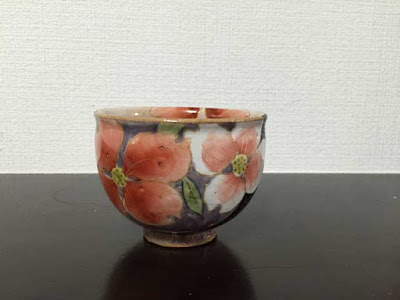Kyoto's Kiyomizu Ceramics
- Published on : 12/07/2017
- by : Japan Experience
- Youtube
Kyoto's Kiyomizu Ceramics
Kyoto's Kiyomizu Ceramics 清水焼
Elegant shape, graceful design, and pure, intense colors - these are the qualities that have drawn generation after generation to Kyoto's Kiyomizu yaki ceramic ware.
Born in the area around Kiyomizu-dera Temple - which sits nestled in the Higashiyama hills on the eastern side of Kyoto, Kiyomizu yaki has had a marked impact on the culture of Kyoto and Japan, and is admired and collected around the world. Kiyomizu yaki traces its origins to the 5th century, and has evolved and changed over many centuries. Colors were introduced in the Muromachi Period (1338-1573), and were followed some years later by over glazing techniques to give an added luster to items after firing. In the late Edo Period, a momentous change took place: the potters of Kiyomizu shifted from earthenware to Chinese-style porcelain. Modern Kiyomizu yaki is a product of all these innovations, and is characterized by penetrating blue, yellow, and green colors and by intricate and refined designs. It is also famous for its unmatched durability. Only a few traditional wood-fired noborigama kilns remain around Kiyomizu-dera Temple. Indeed, the area is no longer the center of Kiyomizu yaki production, although there are still many fine shops in the winding streets that lead to the temple. Some 20 years ago, most of the potters and kilns moved into Yamashina on the other side of the Higashiyama hills on the Tozai subway line. The new Kiyomizu Pottery Complex not only gave the potters spacious new workshops, but also allowed the introduction of more efficient gas-fired furnaces to replace the traditional wood burning kilns. Today, the Kiyomizu Pottery Complex houses twenty ceramic artists, nineteen handicraft pottery companies, and a range of other ceramics related companies. Thanks to the centralized supply of electricity and natural gas for firing the kilns, the artisans are free to concentrate on the artistic aspects of their work, and can offer a stable supply of high-quality items. The works produced at the Kiyomizu Pottery Complex are in the vanguard of modern Japanese ceramics. Altogether, the artisans turn out yearly some 5-6 billion yen worth of tea ceremony bowls, vases, tea cups, and many other items, and hundreds of thousands of tourists visit the complex every year. The 35 years since the complex was opened have seen a wave of renewed interest in traditional arts and crafts in Japan, and especially in Kiyomizu yaki. The Kiyomizu Pottery Complex has played a major role in this revival, and serves as a reminder in our technology-driven world of the beauty that can only come from hand-crafted objects. Kyo-yaki (Kyoto ceramics) and Kiyomizu-yaki have been formally designated as a traditional handicraft by the Ministry of International Trade and Industry.
Access - Getting There
Kiyomizu Pottery Complex (京焼・清水焼工芸館) Kawatakiyo Mizuyakidanchi-cho Yamashina-ku Kyoto 607-8322 Tel: 075 581 6188 Access: Keihan Bus #29 or #29A from Yamashina Station (20 minutes). Alternatively take a Keihan Bus #88B from Shijo Kawaramachi Station (20 minutes) or from the Kiyomizu Gojo bus stop (10 minutes).






























